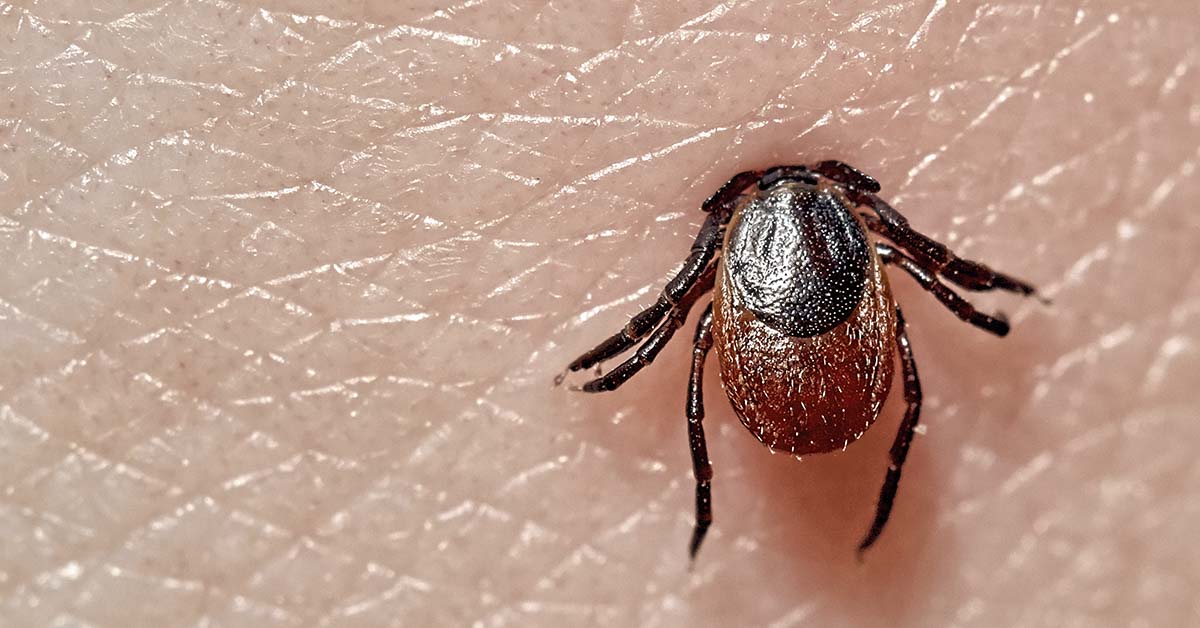Lyme disease is an infection often transmitted by a tick bite. Symptoms can look like other, less dangerous diseases, such as headaches, fatigue, and poor appetite. However, Lyme disease can progress into heart problems and neurological problems. That was the case of Russ Bell, whose tick bite went undetected for too long.
From a Tick Bite to an Alzheimer’s Diagnosis
Nicole Bell first noticed something was off when Russ couldn’t remember the alarm code they had used for years. In hindsight, she recounted signs leading up to this event. He would ask repetitive questions, he was irritable and moody. This negatively affected their marriage. But Nicole began to suspect Lyme disease was the cause. He was often outdoors and had tick bites before. However, he didn’t show the typical fever or rash and the standard Lyme screener said he tested negative. Additionally, his blood work came up normal. So the idea of Lyme disease was put aside.

Russ, who was 60 at the time, saw a neurologist for a cognitive test. Unfortunately, his decline was far worse than expected. Russ was a computer scientist and electrical engineer, and yet he couldn’t complete simple math patterns. The neurologist said the diagnosis was either a previous stroke event or Alzheimer’s. An MRI nixed the stroke event, but a PET scan revealed severe deficiencies in metabolism patterns, another sign of late-stage Alzheimer’s.
Early onset Alzheimer’s is typically genetic, but not in the case of Russ. However, his cognitive decline came fast and Nicole worked to accept this new reality. Then, she spoke with her brother Scott. His wife had struggled with chronic illness and had only recently been diagnosed with multiple tick-borne illnesses.
So Russ got a PCR test, which found three tick-borne infections: Borrelia (also known as Lyme disease), Bartonella and Babesia. “We had wasted 15 months,” Nicole wrote in an essay on TODAY. “Still, there was hope. Infections, at least, can be treated.” [1]
Read: 6-YO Older Brother Comforts Dying Little Sister: Father Captures The Heartbreaking Moment That Defines Sibling Love
“I wish I had done that sooner”
However, treatment was not simple. Russ would go on antibiotics only for the symptoms to return after coming off of them. His cognition continued to decline while other symptoms arrived, like swelling in the knees and joint pain. “After 18 months of treatment, I made the most difficult decision of my life,” wrote Nicole, “to move Russ to a respite care facility.”
This went well at first. Russ socialized and received good medical care and Nicole would visit almost every day. But then March 2020 came, carrying Covid-19 with it. Nicole couldn’t see her husband for six months. She got to see him that September at the hospital after he had a seizure. He was emaciated and hunched over. “The man who had once been so engaging — the life of the party — was vacant. People asked if I thought he recognized me. I didn’t think so.”

Russ passed away in January 2022. Nicole has been raising awareness for tick-borne illnesses ever since. She warns that the symptoms aren’t always typical and encourages people with sudden mood changes, depression, and anxiety to find a doctor knowledgeable about Lyme disease and its effects using the database of the International Lyme and Associated Diseases Society (ILADS). “I wish I had done that sooner.”
Read: ‘I was going crazy’: Woman’s mystery symptoms lead to startling diagnosis
How to Detect Lyme Disease
The symptoms of Lyme disease vary depending on how long the infection was present. It’s most commonly caused by a tick bite, and the first sign includes a round, red rash in a “bullseye” shape. It can appear after several days, or not at all, and it can expand in size.
This disease can begin at any time, but April through October is considered tick season in the United States, especially in the Northeast, upper Midwest and northeastern states. Keep in mind that not all ticks carry the disease; most bites are harmless. Moreover, risk factors include having pets that can bring ticks into the house and spending time outdoors where black-legged deer ticks or Western black-legged deer ticks reside.
Other early symptoms of Lyme disease include flu-like signs, like headaches, stiff neck, fatigue, swollen glands, fever, and aches in muscles and joints. After several weeks or months, other symptoms may follow, including eye problems, heart problems, and neurological problems. After more time passes, joint inflammation and further neurological issues — such as issues with speech and memory, numbness or pain in the extremities — may appear. [2]
Caught early, Lyme disease is usually treated with antibiotics for a couple of weeks. Additional treatment will depend on the individual’s symptoms, overall health, and preferences. Left untreated, Lyme disease can lead into long-term complications in the joints, heart, and brain.
To prevent Lyme disease, be sure to wear clothing that covers skin — like long sleeved shirts and long pants tucked into socks — when outside in potential tick habitats. After coming home, look for ticks on all joints, neck, hairline, top of head, around the ears, belly button, and anywhere where clothing presses into skin. Showering after outdoor activities can also help, in addition to checking pets and children for ticks. [3]
Keep Reading: ‘My Daughter’s Rare Disease Was A Mystery For Years. Here’s How We Finally Got A Diagnosis’
Sources
- “It started with a tick bite. How I lost my husband to undiagnosed Lyme disease.” Today. Nicole Bell. June 1, 2022
- “Lyme Disease: Signs and Symptoms.” CDC. January 15, 2021
- “Ticks and Lyme Disease.” Hopkins Medicine.

